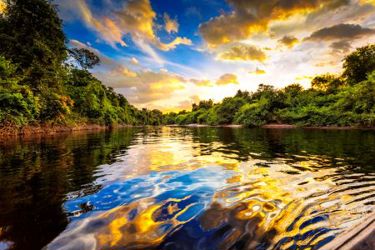When Rivers Reverse

Rivers have long been symbols of life, progress, and continuity. Their steady flows are seen as a metaphor for constancy of nature. They carve through landscapes, connecting ecosystems and communities, embodying resilience and unyielding forward motion. But it may come as a surprise for many to learn that rivers can and do defy this symbolism, reversing their course and flowing backward.
There are a number of reasons why a river might reverse course. For example, the Amazon River once flowed into the Pacific Ocean, but was redirected toward the Atlantic as the Andes Mountains rose up during the Cretaceous period. Similarly, the Wisconsin River was rerouted by glacial activity during the Pleistocene Epoch to flow into the Mississippi River instead of the Great Lakes Basin.
While these are examples of a permanent change in river flow, many reversals are temporary. Temporary reversals are usually short-lived and caused by factors like tides, storms, or heavy rainfall. Coastal tidal rivers such as the Thames and the Hudson experience daily reversals due to the gravitational pull of the moon and sun. Meanwhile, rivers like Cambodia’s Tonlé Sap reverse direction each year during the monsoon season when rising water levels in the Mekong River push water upstream. Storm surges caused by hurricanes and typhoons can also intermittently reverse rivers, including the Mississippi and Pearl Rivers.
Get unlimited access to:
Enter your credentials below to log in. Not yet a member of Water Online? Subscribe today.
